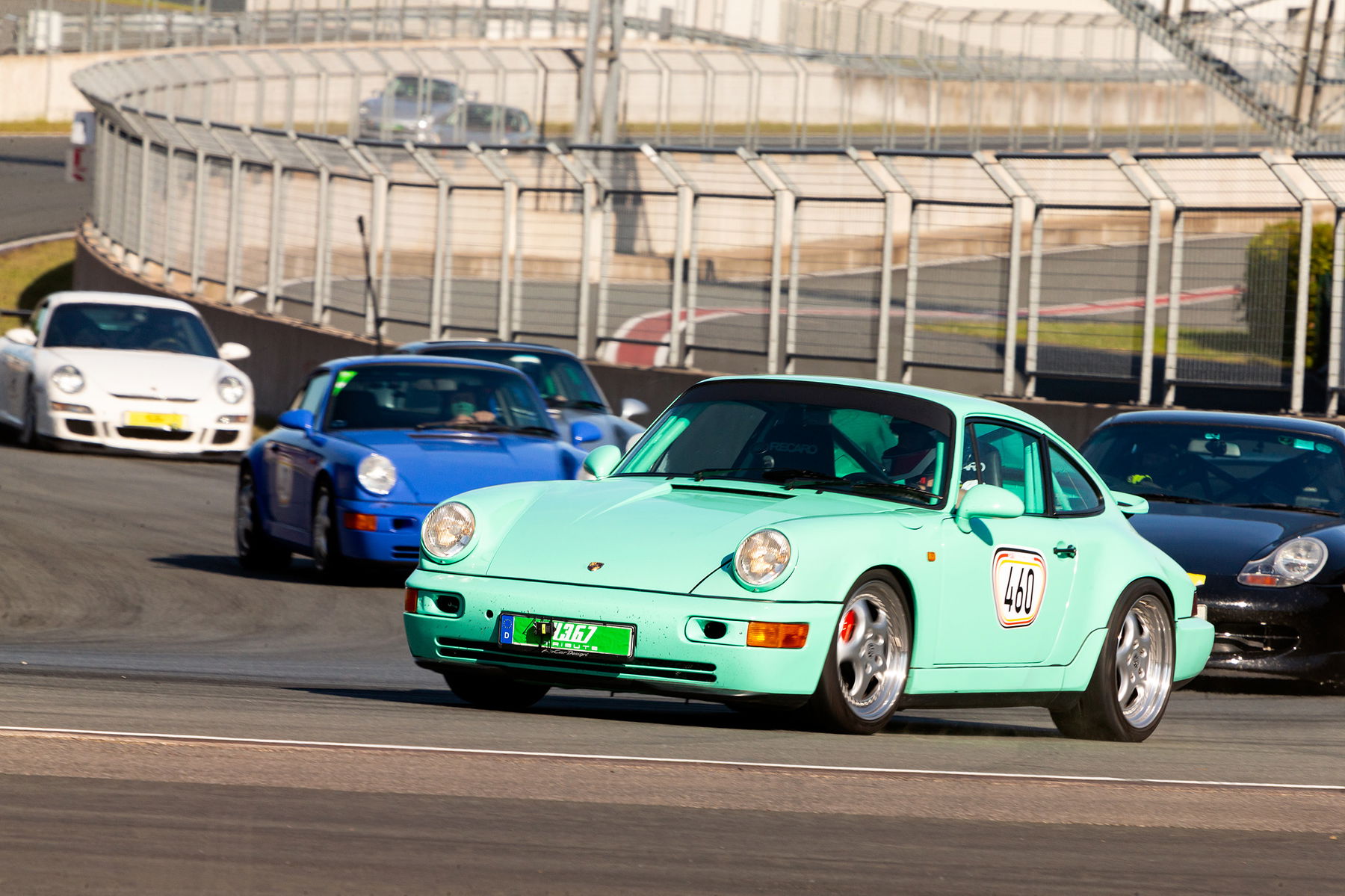
Driving your Porsche sports car on the road is already a pleasure. But many of us dream about taking it on a race track to enjoy its potential to the fullest. After all, these cars were developed on and for the Nordschleife. So wouldn’t it be a great thing to drive some laps in your car on one of the legendary tracks across the globe? What sounds simple in the first place, needs a bit of preparation. Hence, I met Porsche Club Sweden instructor Magnus Olsson at the 4367 Tribute at the Bilster Berg, to have a chat about the matter. What car is best to start with? Which mods do I need? How do I set up the car properly and what kind of equipment would be helpful? Are there special insurances, that cover potential damage? Magnus had an answer to these and a lot more questions on how to prepare your Porsche for the track!
It’s a sunny day at Bilster Berg. Organizer Jonas Nilsson brought around 50 Porschephiles together at the 4367 Tribute event. And there’s everything from 964 to 997 – some modified, some stock and some even in proper race spec. You can easily get a bit overwhelmed by all these dream cars parking next to each other. To clear up my dizzled mind, my first question to the experienced track day driver Magnus Olsson is very simple, yet extremely complicated to answer: “What would be a good Porsche to start with, in your opinion? And should it be stock or already converted to a track car?”


After a couple of seconds to think about it, Magnus has the answer: “You know, I love my 964. It’s easy to work on and easy to find parts for it. But that’s true for all Porsche models. So, if you ask me, pick whatever you like! The generation doesn’t matter too much”, says the track-veteran. Although he has a caveat to add. “We see, that Porsche 911 are getting more and more expensive. Hence, I would also think about a 944 or 968 to start with as well. And with new cars becoming heavier and more powerful, you shouldn’t forget, that they are heavier on tires and consumables cost a bit more.”
Generally, all Mezger-engined Porsches are a good choice, as they have proper dry-sump lubrication systems. That includes all air-cooled cars, as well as watercooled Turbo and GT cars up to the 997 generation 911. But newer 911 Turbo and GT2/3 are great, reliable track cars as well. If you don’t want to spend so much money, the 944 and 968 platform offers a lot of performance at a fraction of the 911’s cost.
Buying a converted track car is usually the easiest and cheapest option. But do your diligence to check, whether the work has been done professionally and the car is still in good, usable condition. You could also start with a stock car and upgrade it yourselves along the way, which is a fun process in itself.
And what about the choice between a stock and a track-built car? “Well, it obviously depends a lot on how much money you want to spend and what is your intention. If you like wrenching yourself, it can be a fun journey to build your own track car. In general, buying a converted car would be the cheapest and easiest option. But – even more than with a road car – trust in the previous owner and all the documentation is key”, Magnus points out.

If you’ve found the right car – or already had one in the first place – you obviously shouldn’t just drive to the track and see how things go. But what’s a good approach to preparing your car? Magnus has a very pragmatic answer up his sleeve: “The first thing that comes to mind, is good maintenance! Your car needs to be in perfect working order. The stress your putting into it on track is many times higher than on the road”, the Swedish engineer says.
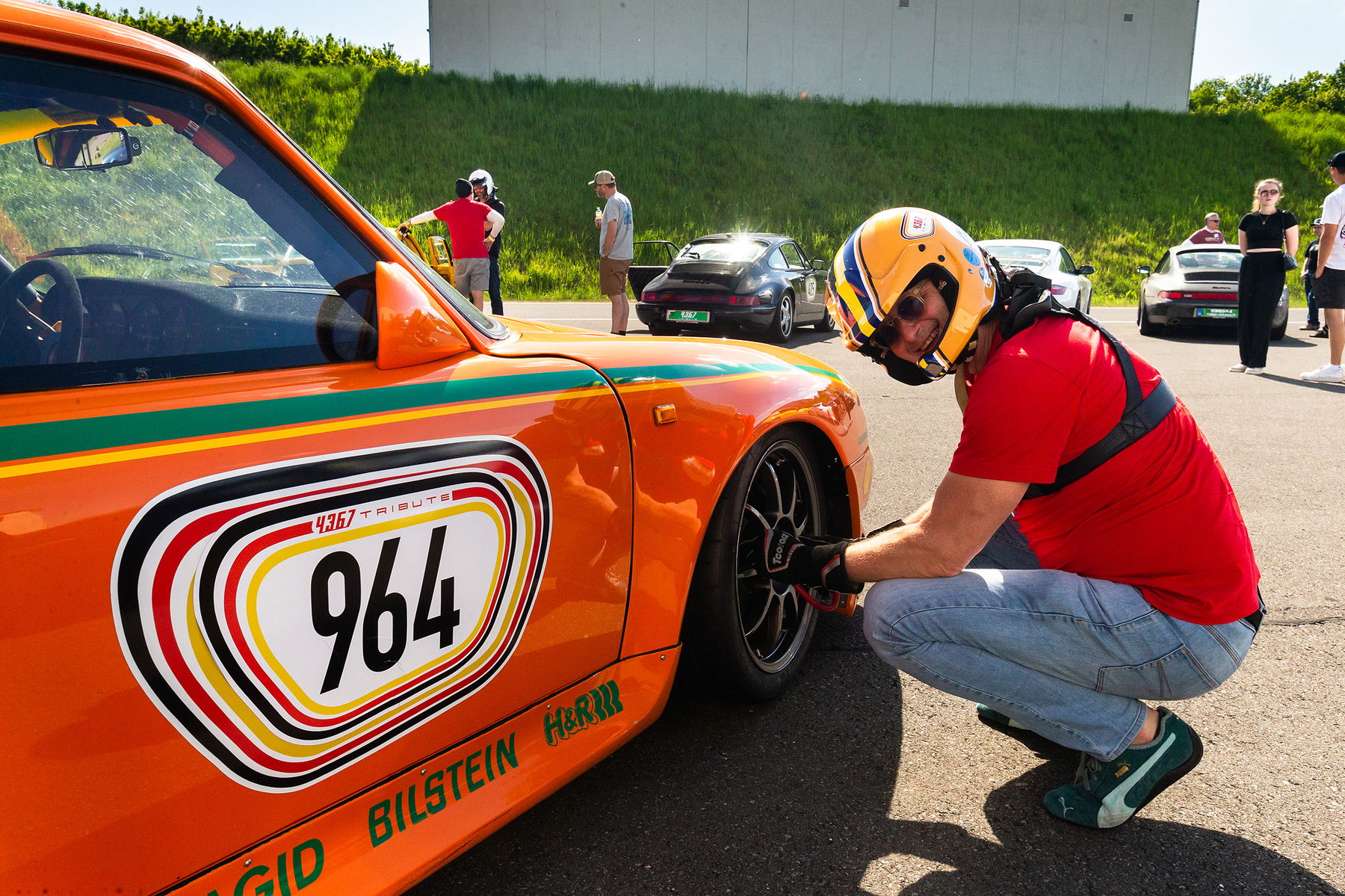
“Because of that, you should have fresh fluids – oil, coolant and the most important one: brake fluid! New spark plugs and gearbox oil are worth spending as well. Then you need to have enough tread on both your tires and your brake pads, as well as good brake discs. If you go with standard road tires and brake pads, be prepared to have very much wear. You could end up with bald tires after like one or two days! This obviously varies a lot, depending your speed, but the more serious it gets, the better your tires need to be.”
Magnus again has a straightforward answer on the matter. “If your engine is fine, leave it as is and focus on tires, ergonomics, safety and suspension. “You obviously need proper track tires. One of the other first things to change is the seat for a bucket seat, if your car doesn’t have one as standard. It helps feeling the car and makes you feel more comfortable on track”, he says. An often overlooked item is a fitting steering wheel and optionally a longer hub, which brings the steering wheel more towards you.
When modifying your road car to make it more suitable for the track, start with suspension, tires and ergonomics, i.e. bucket seats, six-point-harnesses, roll cage and probably a new steering wheel. © Ashgood Classics & Sportscars
“Brakes are usually pretty good on Porsches, so you shouldn’t need more than good brake pads for track use. But upgrading the suspension should help you to improve a lot. Especially on the older cars, the standard suspension is pretty soft and not very responsive. When you start feeling confident on track, it’s maybe time to add a roll cage and six-point-harnesses, next year you’re going for a second set of wheels and then you’re lost on the slippery slope”, Magnus laughs. Once you’re hooked, it usually starts getting out of hand a bit…
Brakes are usually pretty good on Porsches, so you shouldn’t need more than good brake pads for track use. But upgrading the suspension should help you to improve a lot.
Magnus Olsson
It can be a bit overwhelming to find the right event on track for you. There’s countless organizers, a wied variety of tracks and a lot of different concepts. You could for example opt for the very beginner-friendly Petrolhead Days in Zolder, where you’ll get small group instructions. At 4367 Tribute you might be perfect, if you want to take out your classic Porsche with like-minded people and are a bit afraid of overambitious hot hatches all around you.
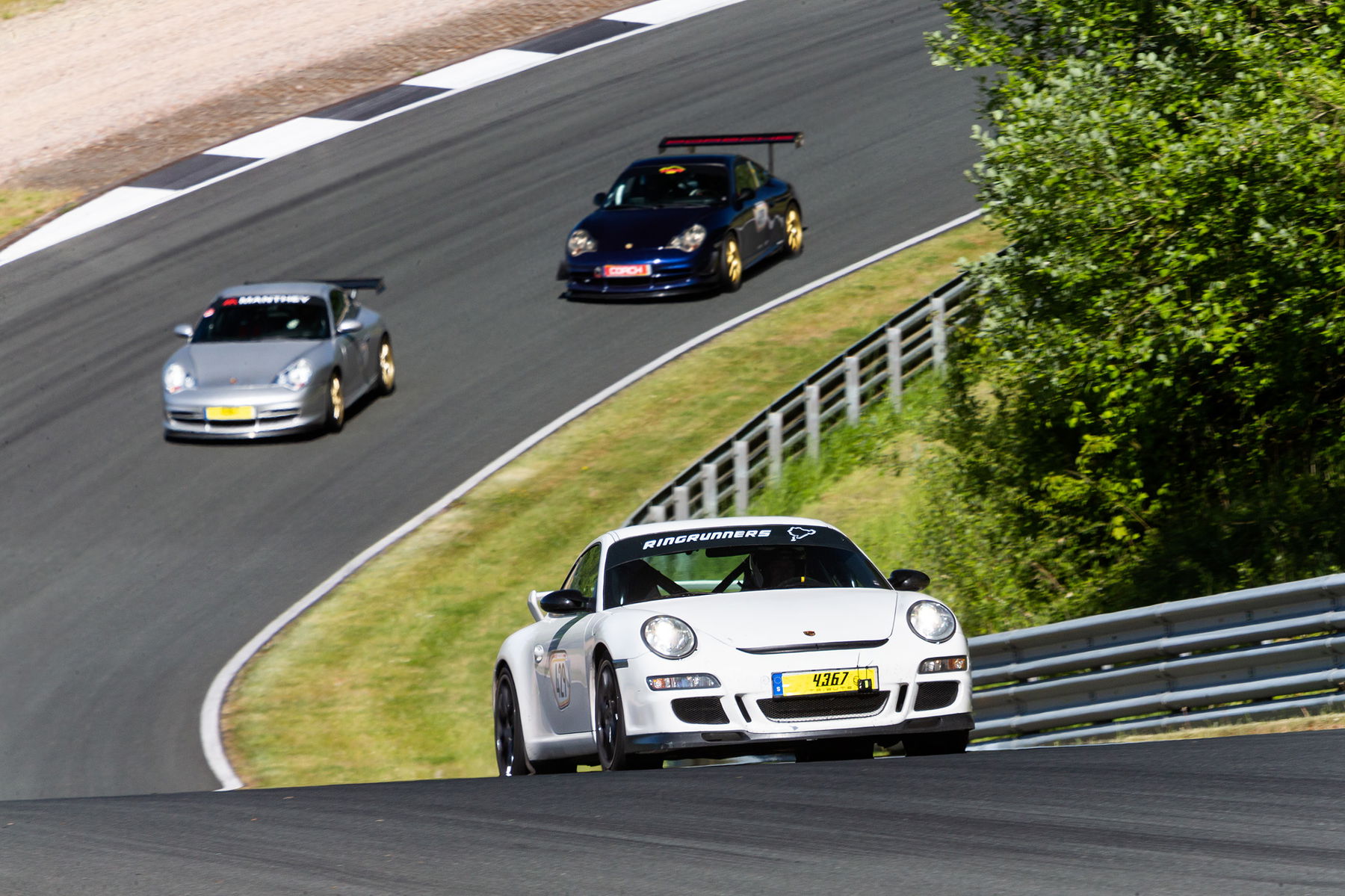

For your first trackday, it’s not the best idea to head straight to the Nürburgring Nordschleife. It might be smart to pick a shorter, slower track with not too much elevation and no blind corners. Here are some tracks in different regions which might have less potential to overwhelm you as a novice*):
– United States: Arroyo Seco (NM), Starke (FL), Gingerman Raceway (MI), Lime Rock Park (CT)
– Sweden: Anderstorp, Mantorp Park
– Finland: Kemora
– Germany: Oschersleben, Spreewaldring, Meppen
– United Kingdom: Bedford, Croft, Snetterton, Pembrey
– Belgium: Zolder
– Poland: Tor Poznan
– Czech Republic: Brno
– France: Anneau du Rhin, Croix-en-Ternois
– Italy: Magione, Binetto, Mores
– Spain: Monteblanco, Jerez, Valencia
– Portugal: Braga
*) There’s usually very good facilities of smaller car clubs, which aren’t race tracks, but proving grounds. Their trainings are usually a good starting point as well.
That’s why Magnus suggests being honest about your own needs and skills in the first place. “Start slowly and don’t overestimate your skills! Never choose a “too high” group or event. Being too slow for the group you’re in, can not only be stressful but outright dangerous! And you should only look at yourself, with your specific car and not compare yourself to others. Other cars might have more power, better tires, better brakes… If you want to start with guided laps in the beginners’ group, that’s fine, just like starting in a group above if you’ve got a shiny new GT3 and are an experienced simracer on the other hand.”
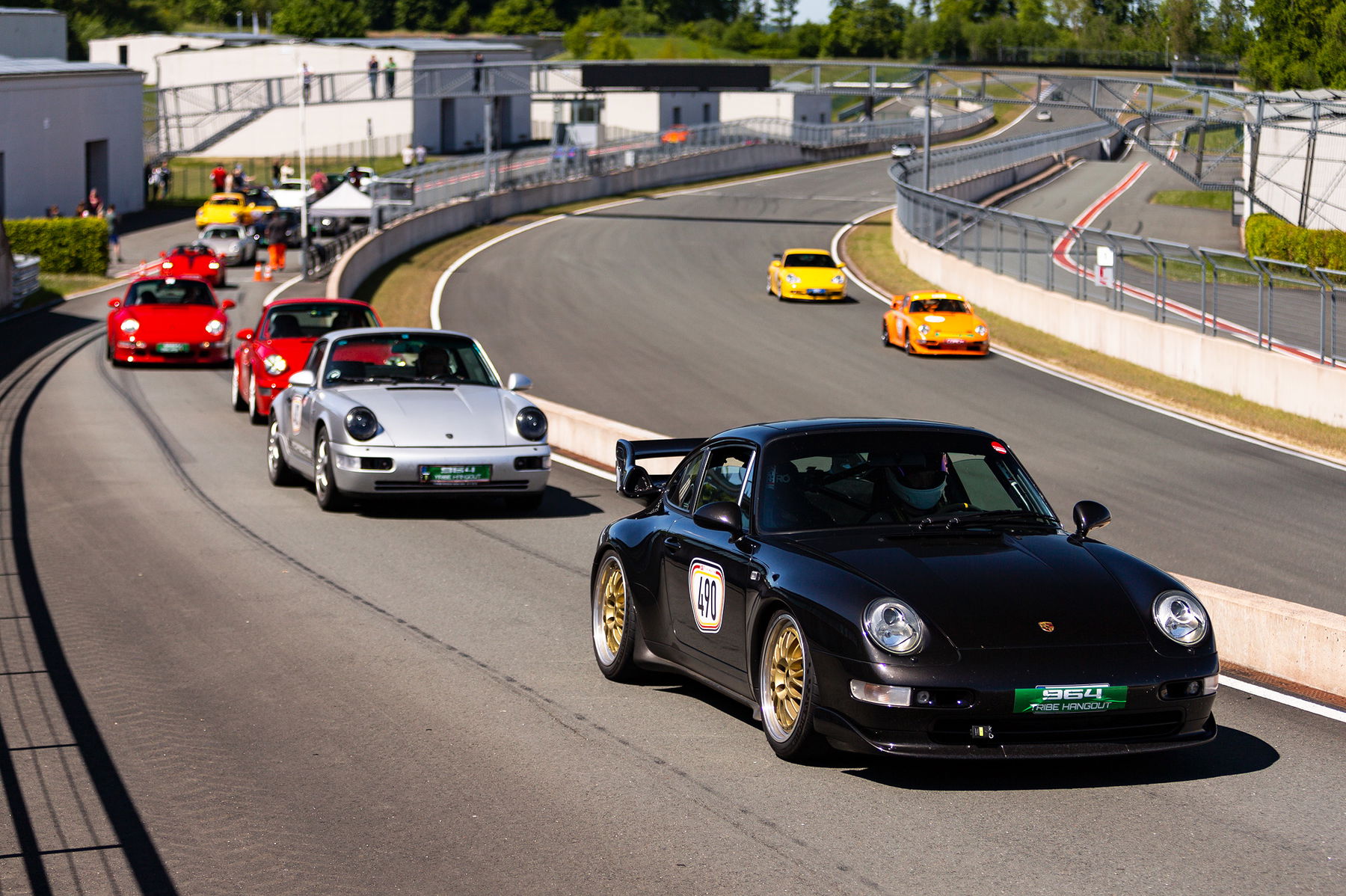

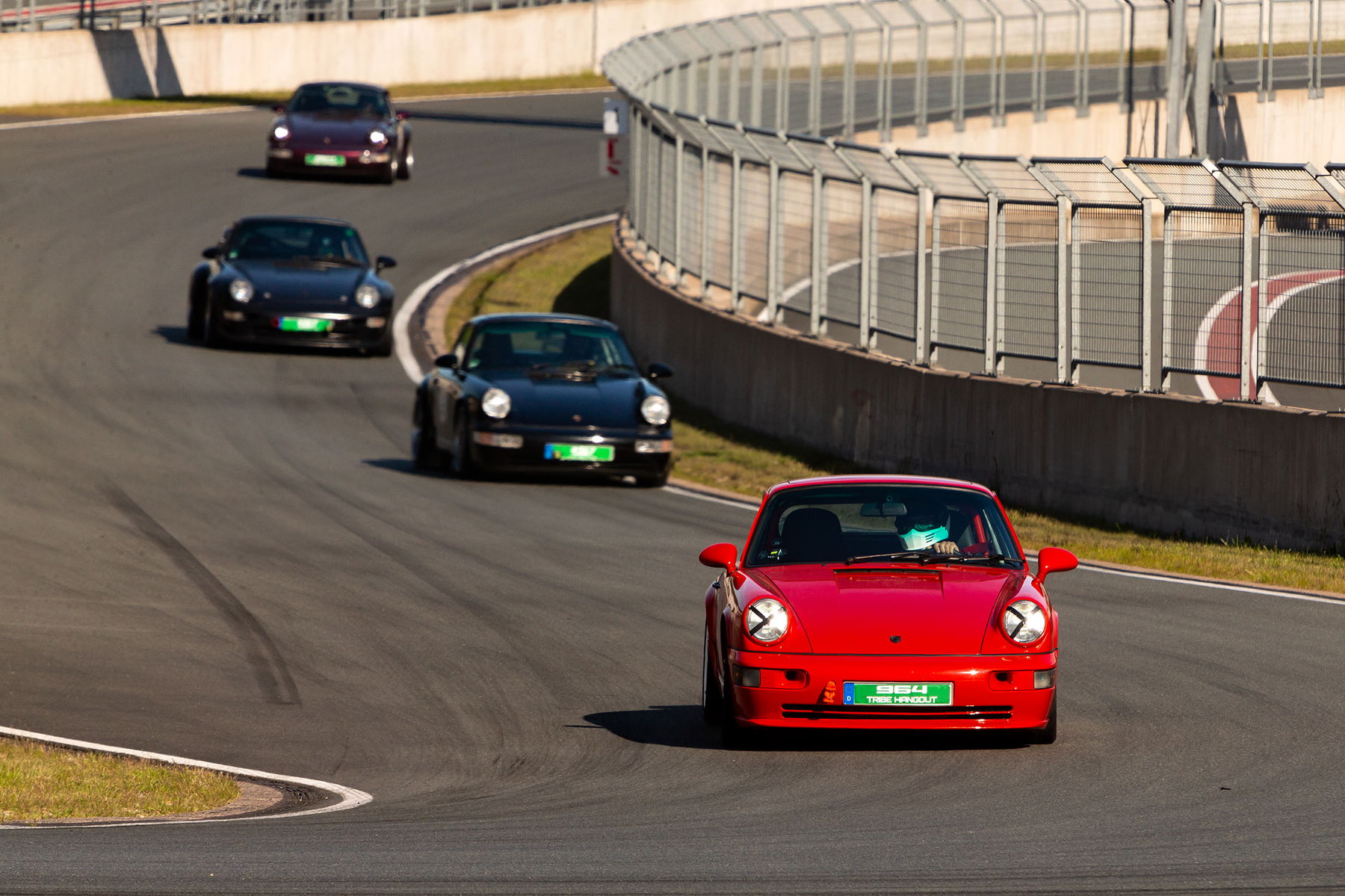

Finding the right event for you isn’t the easiest task in the world. But looking around your area for a track or proving ground and having a look at their event schedule is a good starting point. There’s usually every public track day event listed. “Another good way would be to contact your local Porsche Club. They often offer driving trainings as well es track experiences”, Magnus adds.
Another one of those questions, where the answer starts with “It depends”. Magnus says, that with most Porsche Club events, there is a possibility to either get an extra insurance or your own insurance might even got you covered already. “There are differences between every organizer. As soon, as it is a timed event, it’s usually classified as a race training and your insurance won’t cover anything. Hence, I highly recommend talking to the organizers and your insurance company before the event”, suggests Magnus.
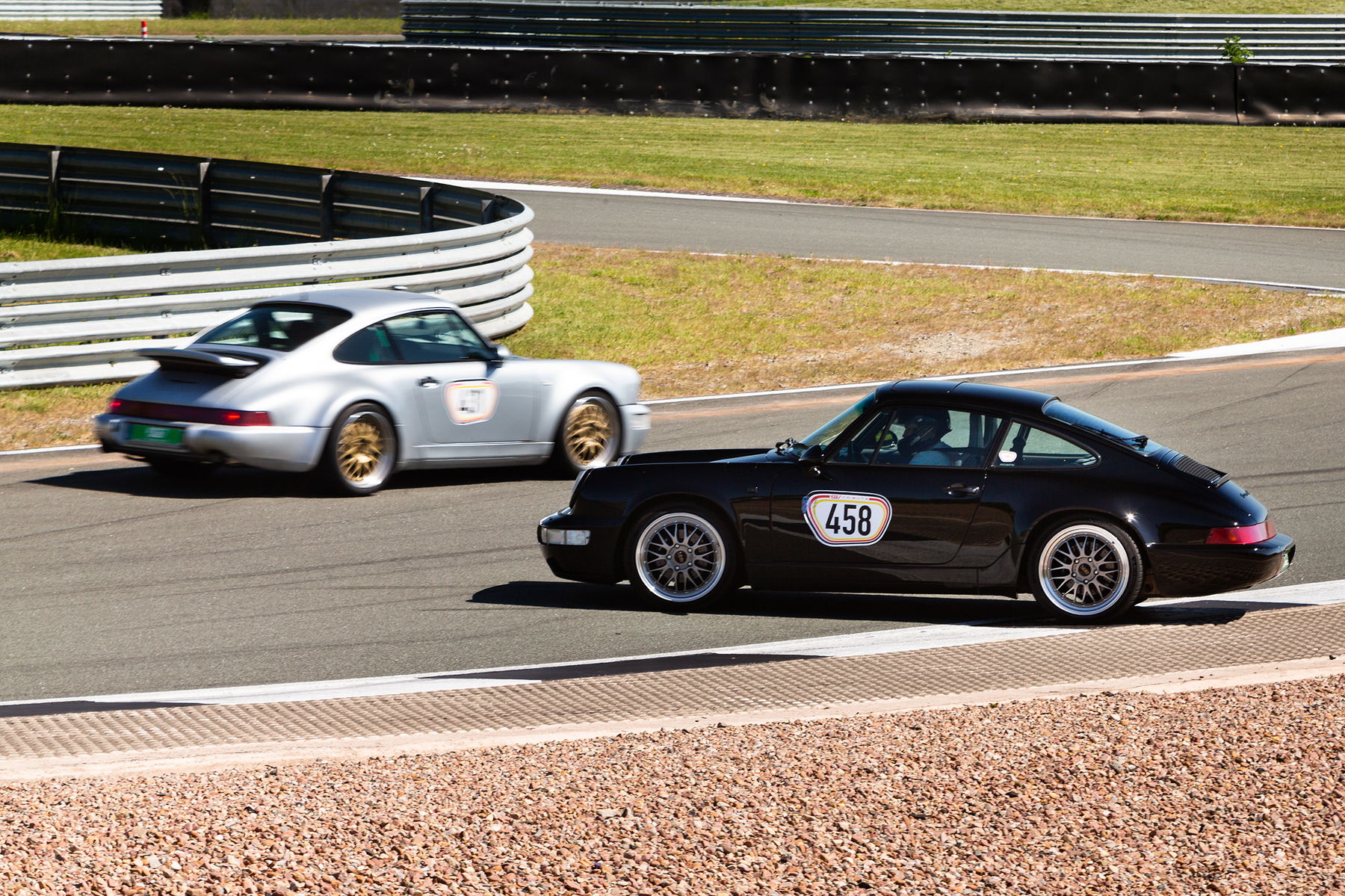
“You usually bring more with you, than you actually really need. In the paddock, there’s always someone close by who has, whatever you need. And if he or she can’t help immediately, they’ll almost definitely know someone who can”, the experienced track day instructor explains. Paddocks at the track are one of the friendliest areas in the world, generally. So almost everybody is happy to help and share knowledge, experience and tools.
The essentials would be:
– tire pressure gauge
– air pump/compressor
– at least 1 extra liter of oil
– torque wrench
– tow hook
– appropriate clothing
– helmet
Nice to have:
– gloves
– head and neck support (HANS)
– toolkit
– water bottle + snacks
– ear plugs
But there are some essentials, that you should bring with you: “As a must, I’d say take a tire pressure gauge, at least 1 liter of extra oil, a torque wrench for your wheels and your car’s tow hook with you. For yourself, of course a helmet is mandatory and gloves very helpful”, Magnus says. “Another good addition would be an air pump/battery powered compressor, so you can adjust tire pressures on your own. A Head and Neck Support (HANS) is also highly suggested.”
You’ll get a time table with your registration – as well as the group you’ll be driving in – which tells you, when you’ve got to be at which point in the facility. It usually all starts with a briefing early in the morning. There, the organizers will tell you, what to expect, what flag rules there are to follow and everything safety related. Don’t be scared to ask questions here – the safer you feel, the better the experience in the end.
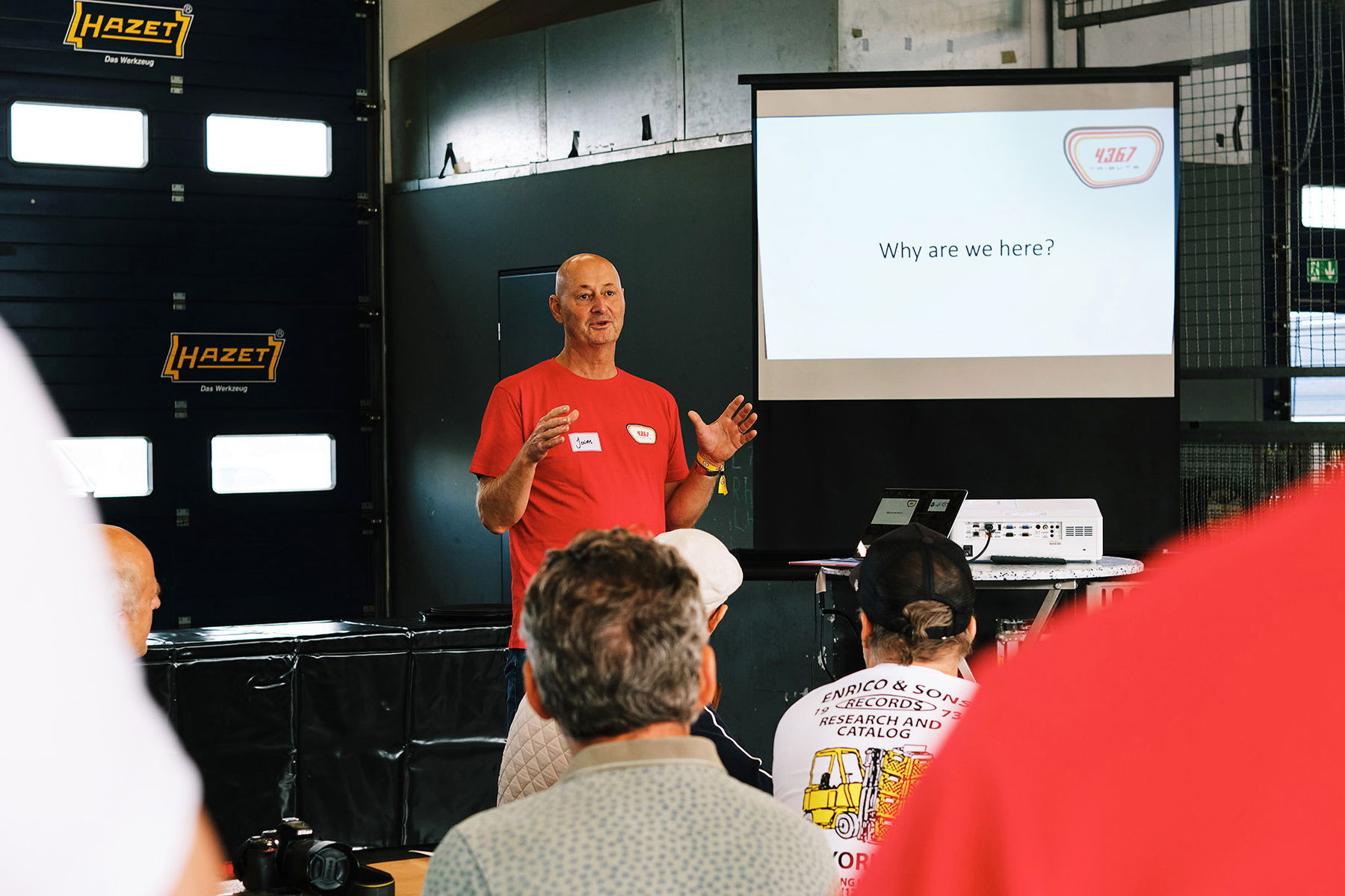
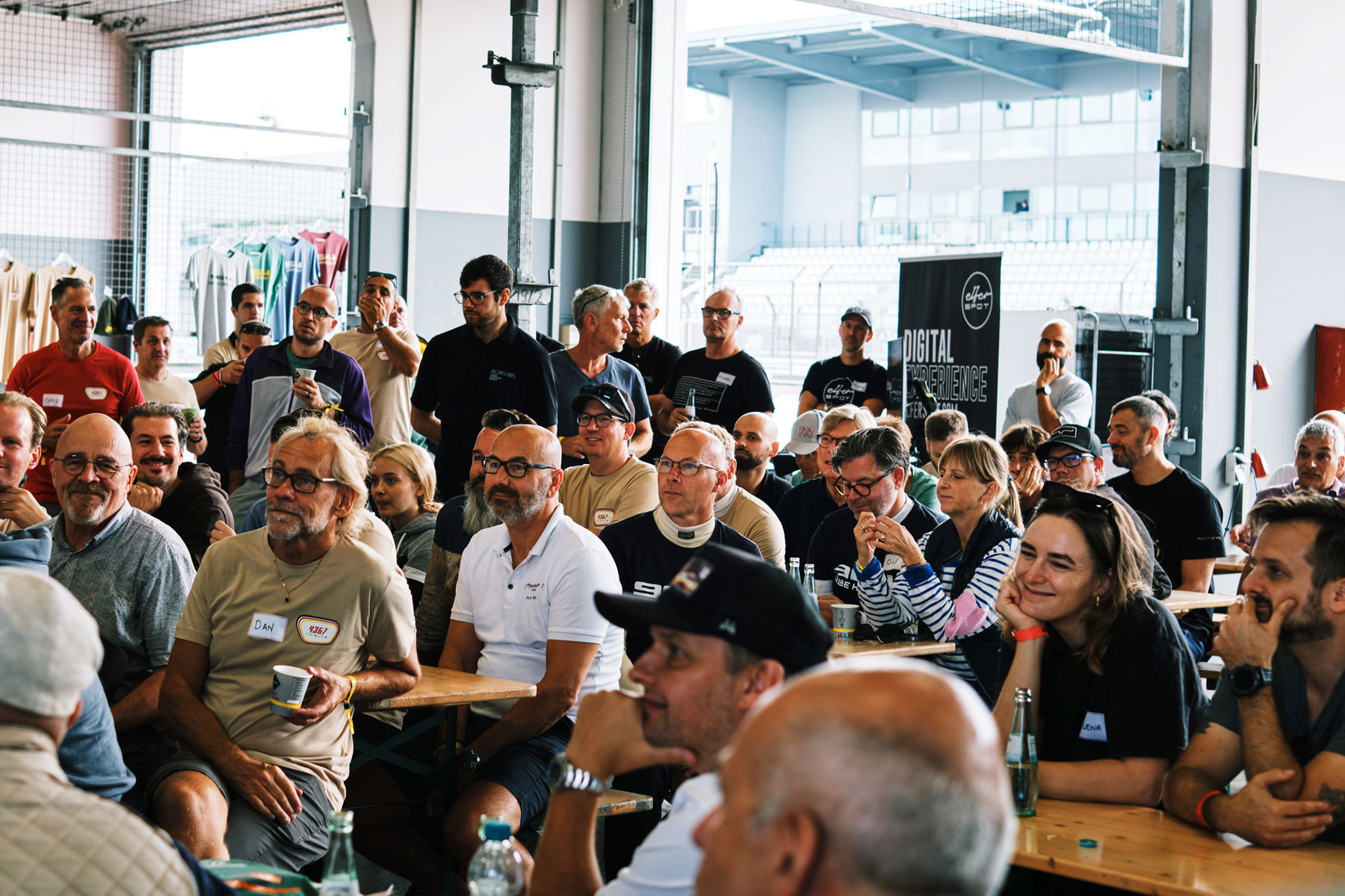
“The most important thing is to start slowly. You see a lot of crash videos on YouTube where People have seemingly forgotten how to brake. Start easy and build up from there. Remember: When you go out for the first time, you’re cold and the car itself is cold as well. Its tires, engine and also suspension need to come up to temperature, just as you do”, says the Swedish instructor.
Once you’re familiar with the track and know the line, you should focus on one thing during a session. Pick a corner, where you weren’t happy with your driving before and focus on the area, where you had most of your problems. Braked too early and coasted for too long before a corner? Look out for different braking markers. Went wide in a certain corner? Focus on braking earlier an turning in a bit later. And always remember: One thing at a time. If you have problems improving, get yourself an instructor. They can help you improve very quickly!
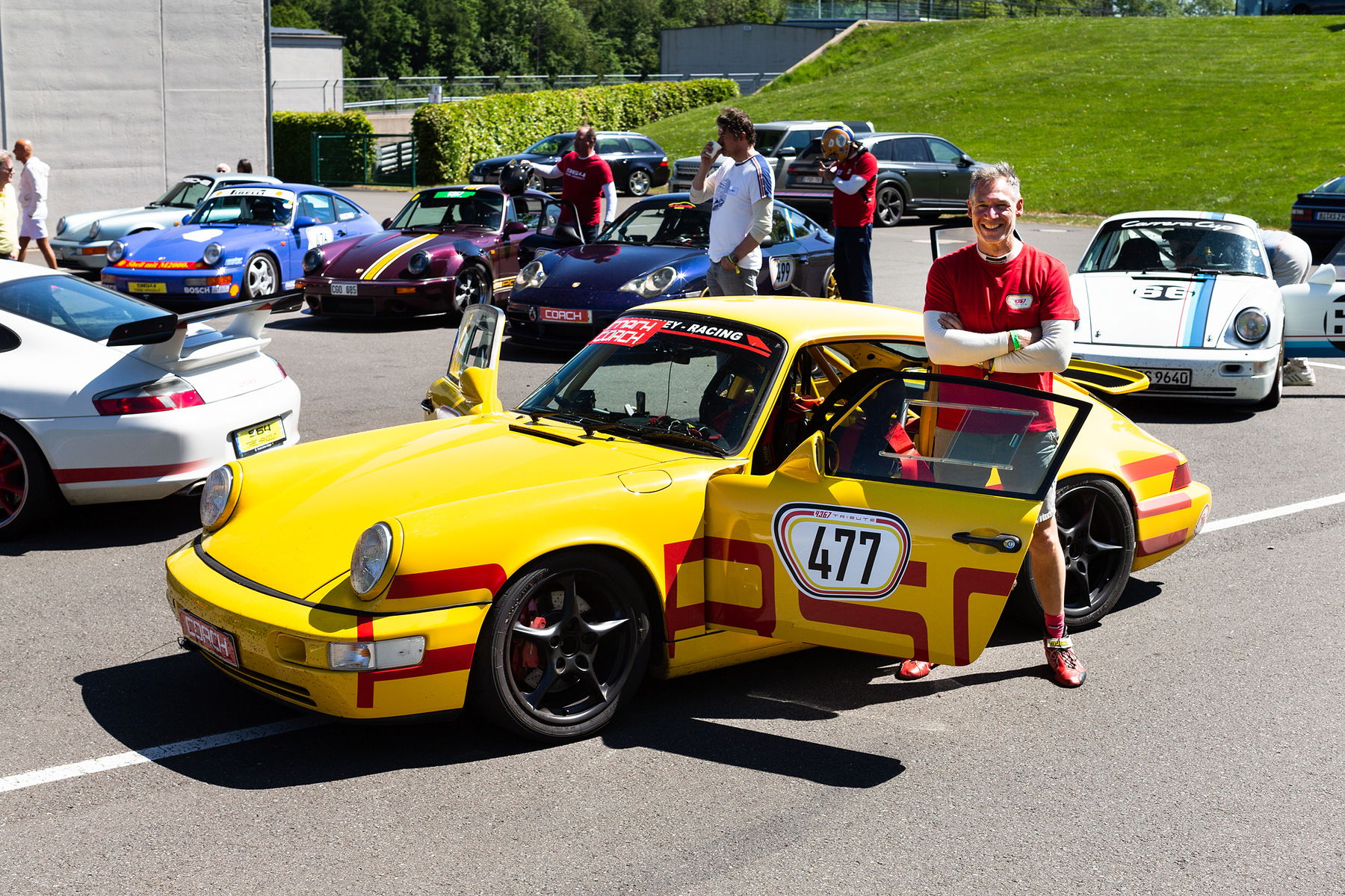
What sounds a bit weird in the first place, actually makes a lot of sense. For most people, driving a car on track is highly addictive. Once you’ve tasted that sweet, sweet nectar, you might be spoilt for life. And usually, this leads to spending quite a lot of money on improving your car, getting yourself new equipment like gloves, shoes, overalls and so on.
That depends very much on the kind of event you book, the car you drive and how quick you are. Expect something between 400 to 1,000 Euro per day for registration. Prices vary for example due to very high differences in cost for renting a track. Grand Prix tracks or the Nordschleife are for example much more expensive than smaller, less known tracks. Then, there’s individual traveling costs, which you have to consider.
Calculate your additional consumables and wear and tear for something like 200 to 300 kilometers of driving per day. That equates to something between 40 to 100 liters of fuel, depending car and driving style. Tire life could also be somewhere between 1 to 10 days.
As a beginner, expect at least 500, if not 1,000 Euro for fuel, oil, tire and brake wear across the day. But as always: It depends on so many variables, that you can’t really put a number on it.
Going on track might not be a sensible financial decision, but from a pure enjoyment perspective, there is not a lot of things, that come close or even beat it. So be brave and try it!
But even though it could likely end up being the most expensive day in your life – in the long run – it might also let you get into one of your most enjoyable hobbies. Challenging yourself to set new personal best lap times and see what gains your new parts made possible, can almost become an obsession. You will meet a lot of new friends along the journey and you can do track days up until a very high age as well. Going on track might not be a sensible financial decision, but from a pure enjoyment perspective, there is not a lot of things, that come close or even beat it. So be brave and try it!
Participating in track days not only gives you a lot of driving pleasure. You’re also very likely going to make lots of new friends.
© images: Claes Nilsson
Elferspot magazine